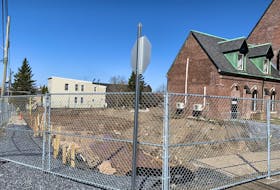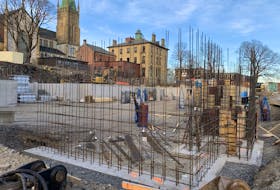Leon de Vreede cringes at the number of Bridgewater homeowners throwing away money they don’t have on needlessly excessive home energy bills.
“The numbers are crazy,” said the town’s sustainability planner. “The average household in Bridgewater is spending over $5,000 on energy and when you consider that the median income is somewhere in the low $30,000 range, that is an incredible amount going to energy.
“Nova Scotia has one of the highest rates of energy poverty in the country. We have low median incomes and high energy costs coupled with inefficient, old housing.”
De Vreede and the Town of Bridgewater have done something about the crisis, offering residents up to $20,000 in low interest loans, exclusively for home energy upgrades. That includes insulation, energy efficient windows and doors, high efficiency heat pumps and solar panels. The cost simply gets tacked onto the person’s property tax over 10 years at a four per cent rate of interest.
“What we’re seeing is most people are getting a dollar for dollar pay back on upgrades within five years. It’s offering people a chance to spend money on the things they really need, but removing the drain from energy is a major issue.”
Since his arrival in Bridgewater a decade ago, the certified planner, and graduate of Acadia University’s environmental science program, has implemented energy efficient measures of his own that have led to a 23 per cent reduction in the municipality’s energy consumption, including the installation of solar hot water panels at the town hall, public works garage and police station.
“So we’re able to spend more money on necessary services we provide. That’s money that we
don’t have to take away from other services or get from taxpayers. We’ve mapped that out and used an annual energy report that lays out what our savings are and why.”
It all falls into de Vreede and the municipality’s broader plan to develop a local energy economy that aims to cut greenhouse gases by 80 per cent in the municipality by 2050. De Vreede was the lead on the exhaustive 55-page Community Energy Investment Plan that was unveiled by the town in January. It’s a necessary plan, requiring $11 million in annual investments to keep Bridgewater sustainable, he claims.
It includes massive spending: $153 million for deep energy retrofits to all buildings in Bridgewater. Another $157 million is aimed at large-scale solar, wind and hydro generation in or near Bridgewater, as well as district energy and energy storage systems. That leaves $64 million for electrifying all vehicles in the community (introducing autonomous vehicles), and expanding public transit and active transportation systems.
Put it all together and the plan claims the community can save over $2 billion in energy costs in the 32-year period between 2018 and 2050.
“Every solution that’s in our plan is something that uses current technology,” said de Vreede.
“We’re not waiting for fusion technology. It’s current technology we already do have and we can make it pay for itself.”
The plan and the town’s efforts in moving toward a sustainable, green economy has garnered national attention, including support of Green party Leader Elizabeth May. At last week’s 2018 Globe Climate Leadership Awards, Bridgewater won the Small Municipal Trailblazer category for its efforts.
“Through their Community Energy Investment Plan, Bridgewater is putting in place unique and innovative climate mitigation activities to help create opportunities to renew the community and its economy,” stated the award citation.
The plan lists lots of potential for employment targeted at tradespeople, equipment suppliers and contractors, that would generate “nine person-years of employment when spent on buildingretrofits.”
“We see it as a huge economic development opportunity for our communities that will improve property value, provide better, more secure, more energy resilient homes,” said de Vreede. “We’re doing cutting edge work in what is a fairly average Atlantic Canadian town. If we can prove that this can take off and go places I think it’s a model that can be used everywhere. That’s what I’m really excited about.”
Green party Leader Elizabeth May agrees.
“Bridgewater can take a bow for the good work they’ve done,” said May. It’s clear that they have a plan. “It’s not just that we have to give up fossil fuels and everyone has to give up driving. It empowers people and sets a goal. It sets targets.”
But, she says, the federal government has to step up and show similar commitment.
“Why can’t we get energy efficiency on the agenda? Thirty per cent of greenhouse gases in Canada still come from leaky buildings.
“We have three budgets in a row from (the Liberals) and not one of them promotes eco-energy in buildings, green and active transportation. Canada is the only country in the G7s that doesn’t provide an incentive for moving to clean energy or electric vehicles.”
De Vreede agrees. He’d like to see more support coming from the federal and provincial governments. But, in the end, he said it starts with a community grassroots campaign.
“We need to find the money. One thing that our plan doesn’t include is where the money is coming from.
“Maybe someone who wants to invest $1,000 in mutual funds or the stock market would look at putting their money into a community scale energy system that will pay them similar dividends. These are all ideas we’re considering. But we’re determined to make this work.”









